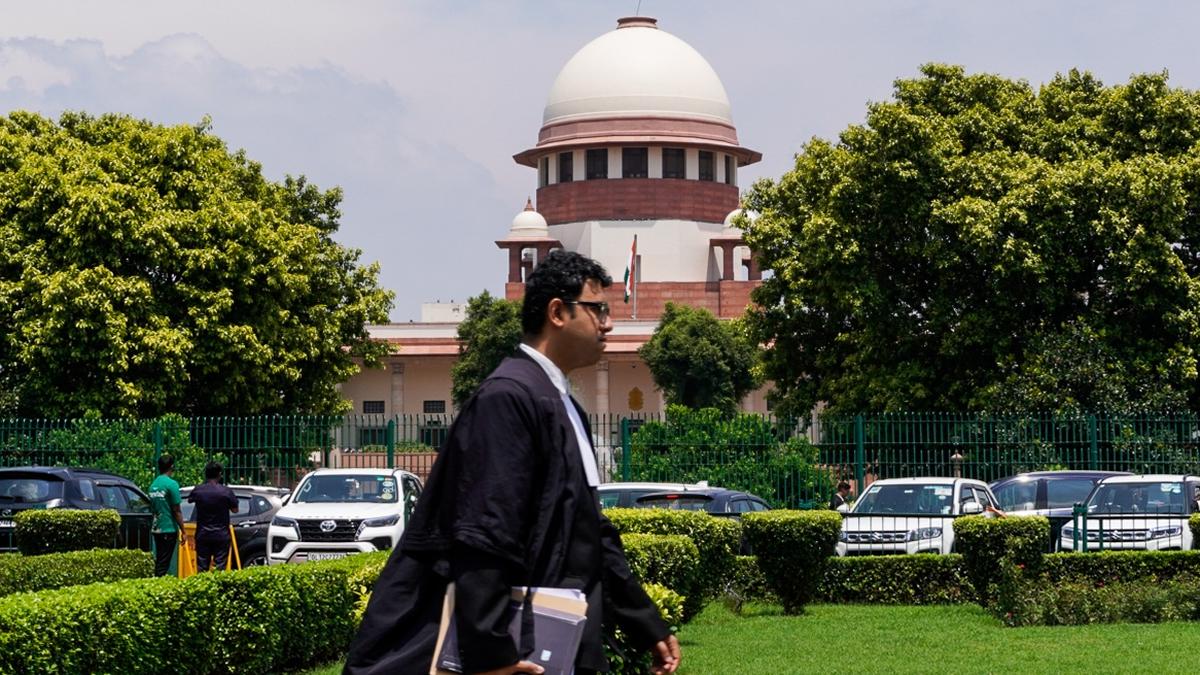Judicial Pendency in the Supreme Court

- 16 Sep 2025
In News:
The Supreme Court of India, the apex guardian of constitutional justice, is witnessing an unprecedented surge in pendency, reflecting deeper structural and procedural challenges in the judicial system. As of 2025, according to the National Judicial Data Grid (NJDG), the number of pending cases has reached an all-time high of 88,492, comprising 69,605 civil and 18,887 criminal cases. This marks a 35% rise in five years, even as the Court functions at its full sanctioned strength of 34 judges.
Causes of Rising Pendency
- Several systemic factors have contributed to this backlog. Despite digitization and virtual hearing reforms, the rate of disposal lags behind fresh filings — in August 2025 alone, 7,080 cases were filed while only 5,667 were disposed of, indicating a disposal rate of around 80%.
- The limited number of working days, frequent adjournments, and procedural complexities hinder case progression. India’s judge-to-population ratio remains alarmingly low at 21 judges per million people, far below the recommended 50. Moreover, the indiscriminate filing of Special Leave Petitions (SLPs) under Article 136 has transformed the Court into a general appellate body rather than a constitutional one.
- The government, as the largest litigant, contributes nearly 50% of total cases, many of which are repetitive or avoidable. In addition, outdated infrastructure, slow AI integration, and underutilization of Alternative Dispute Resolution (ADR) mechanisms like arbitration and mediation continue to strain the system.
Implications of Judicial Delay
The consequences of prolonged pendency are far-reaching. The oft-quoted maxim “justice delayed is justice denied” holds especially true in India, where delays erode public trust and institutional credibility. Prolonged trials lead to social injustice, particularly for vulnerable groups awaiting resolution of criminal and civil disputes.
Economically, legal uncertainty deters investment, slows contract enforcement, and raises transaction costs. The Indian Justice Report 2025 highlights that over 76% of prisoners are undertrials, leading to chronic prison overcrowding — a direct fallout of judicial delays.
Reform Measures and Innovations
- The Supreme Court has initiated multiple steps under its “Unclogging the Docket” initiative. The Differentiated Case Management (DCM) system categorizes cases based on complexity, allowing short and infructuous cases to be fast-tracked. This reform has achieved a disposal rate of 104%, setting a benchmark for judicial efficiency.
- Arrears Committees monitor long-pending cases and ensure compliance with the Malimath Committee recommendations, which advocate stricter timelines and reduced adjournments. Structural reforms like increasing judicial capacity, reducing vacation periods, and filling vacancies promptly have also been proposed.
- Legislative changes such as the Arbitration and Conciliation (Amendment) Acts of 2015 & 2019, the Commercial Courts Act (2018), and amendments to the Negotiable Instruments Act (2018) aim to streamline procedures and promote out-of-court settlements.
- Technological innovations like e-filing, virtual hearings, and the National Judicial Data Grid (NJDG) have improved transparency, though integration across courts remains incomplete. The Chief Justice’s recent move to convert part of the summer recess into working days underscores an institutional willingness to reform.
Way Forward
Experts have long advocated for dividing the Supreme Court into a Constitutional Division (for fundamental rights and constitutional issues) and a Legal Division (for statutory appeals), as proposed by the 10th and 11th Law Commissions. Expanding judicial strength, adopting AI-based case management, and promoting ADR mechanisms are equally vital.
Conclusion
The mounting pendency in the Supreme Court underscores a structural crisis demanding urgent multi-pronged reforms. While the Court’s efficiency initiatives and government’s prompt action on judicial appointments are encouraging, sustainable change requires institutional restructuring, procedural streamlining, and technological modernization. Upholding the ideal of “Speedy Justice as a Fundamental Right” is imperative for maintaining the faith of citizens in India’s democratic and judicial institutions.
